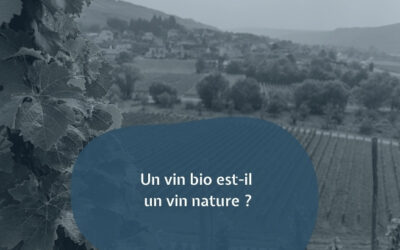Green wine, you know?
Where is vinho verde produced?
This wine is produced in the North West of Portugal, from the northern border with Spain to Porto. This vineyard, one of the oldest in Europe, now represents 15% of Portuguese wine production. The original characteristic of this appellation is that it makes it possible to produce red wine, white wine but also rosé wine.The appellations of vinho verde?
There are 9 sub-regional appellations, such as Amarante, Basto, Lima or Sousa. There are almost exclusively indigenous grape varieties, such as Alvarinho, Loureiro, Amaral, Padeiro.So why “green”?
It is therefore not because of its color, but rather linked to the fact that the grapes are harvested very early, before they are fully ripe. This early harvest allows the wine to be lively on the palate. What we love about “vinhos verdes” are their freshness and simplicity, especially when it's hot. These are wines to drink young. The red wines are light and fruity just like the rosé wines. The white wines have a very light color, they are fresh and have citrus notes on the palate. There is also a sparkling green wine. In these periods of high heat, be careful to serve the wine at the right temperature. You will not appreciate a wine served too hot. For green wines, serve sparkling wines at 6-8°C, whites at 8-10°C, rosés at 10-12°C or reds at 12-15°COur maps of Portugal
-

Map of wines and vineyards of Portugal poster 50×70 Vintage
32,00€ excl. tax / 33,76€ VAT Incl. -

Map of Wines and Vineyards of Portugal poster 50×70 Modern
32,00€ excl. tax / 33,76€ VAT Incl. -

Portugal wine and vineyard map poster 50×70 Night
32,00€ excl. tax / 33,76€ VAT Incl. -

Portugal Wine and Vineyard Map - Framed Posters - Vintage
29,99€ - 69,99€ -

Portugal Wine and Vineyard Map - Framed Posters - Modern
29,99€ - 69,99€ -

Portugal wine and vineyard map – Framed posters – Night
29,99€ - 69,00€ -

Map of wines and vineyards of Portugal – Wooden support – 10mm
80,00€ excl. tax / 96,00€ VAT Incl. -

Modern Portugal Wine and Vineyard Map - Poster with Hangers
90,00€ -

Portugal Night Wine and Vineyard Map - Poster with Hangers
90,00€ -

Vintage Portugal Wine and Vineyard Map - Poster with Hangers
90,00€ -

Map of Wines and Vineyards of Portugal – Printing on Aluminum 50×70 Vintage
99,00€ excl. tax / 118,80€ VAT Incl. -

Map of Wines and Vineyards of Portugal – Printing on Aluminum 50×70 Modern
99,00€ excl. tax / 118,80€ VAT Incl.
Is an organic wine a natural wine?
"Organic wine" and "natural wine", here are two terms that often lead to confusion and sometimes, often misused. Indeed, consumers of organic products still find it difficult to understand the difference between these two denominations because...
What is an organic wine?
Since the creation of the official quality label "organic wine" in 2012 by the European Union (EU), we find more and more on the wine market, wine products that proudly display this label. This new concept is foreign to you and you...
What is an eau-de-vie?
The term "eau-de-vie" is one of the most used in the world of alcohol. People usually use it to refer to certain types of alcoholic beverages. But given the wide range of alcohol available on the market, new consumers sometimes have...
What is a spirits?
The terms "spiritual alcohol" or "spiritual drink" are widely used in the world of alcoholic beverages. However, they can be difficult to understand, especially for new consumers, who often tend to confuse them with others...
How to read an Italian wine label
The label of a wine generally informs the consumer about its quality, its origin and some of its specificities. Thus, it plays the same role as a business card, but for vintages. Thanks to the precise information it contains, it helps the...
The main information found in the Italian specifications
Like the French grands crus, many Italian wines benefit from quality labels. As you know, these generally testify to the superior quality, but also to the particular origin of each wine production. Each designation...
What is the difference between Crémant and Champagne?
The words Crémant and Champagne come up very often in the world of wine. Even though both terms refer to a sparkling wine, there are still some nuances between them. Would you like to know which ones? In this article, we will talk about the differences...
The different climates
This article aims to analyze climates and how atmospheric conditions influence wine, citing the French case but also the rest of the world. The uniqueness and specific typology of a particular chalice of wine are the result of a series of factors...
The different types of viticultural soils
In this article we propose an analysis of viticultural soils, considering an overview of the different soil typologies and, in detail, citing France, the soils of the world but also that a land is capable of influencing wine. First it is necessary to give...
Different definitions of acidity
Acids are a fundamental part in wine, both from a chemical point of view and from the point of view of tasting and taste experience. There are different definitions and varieties of acids in wine that we will analyze in this article....











